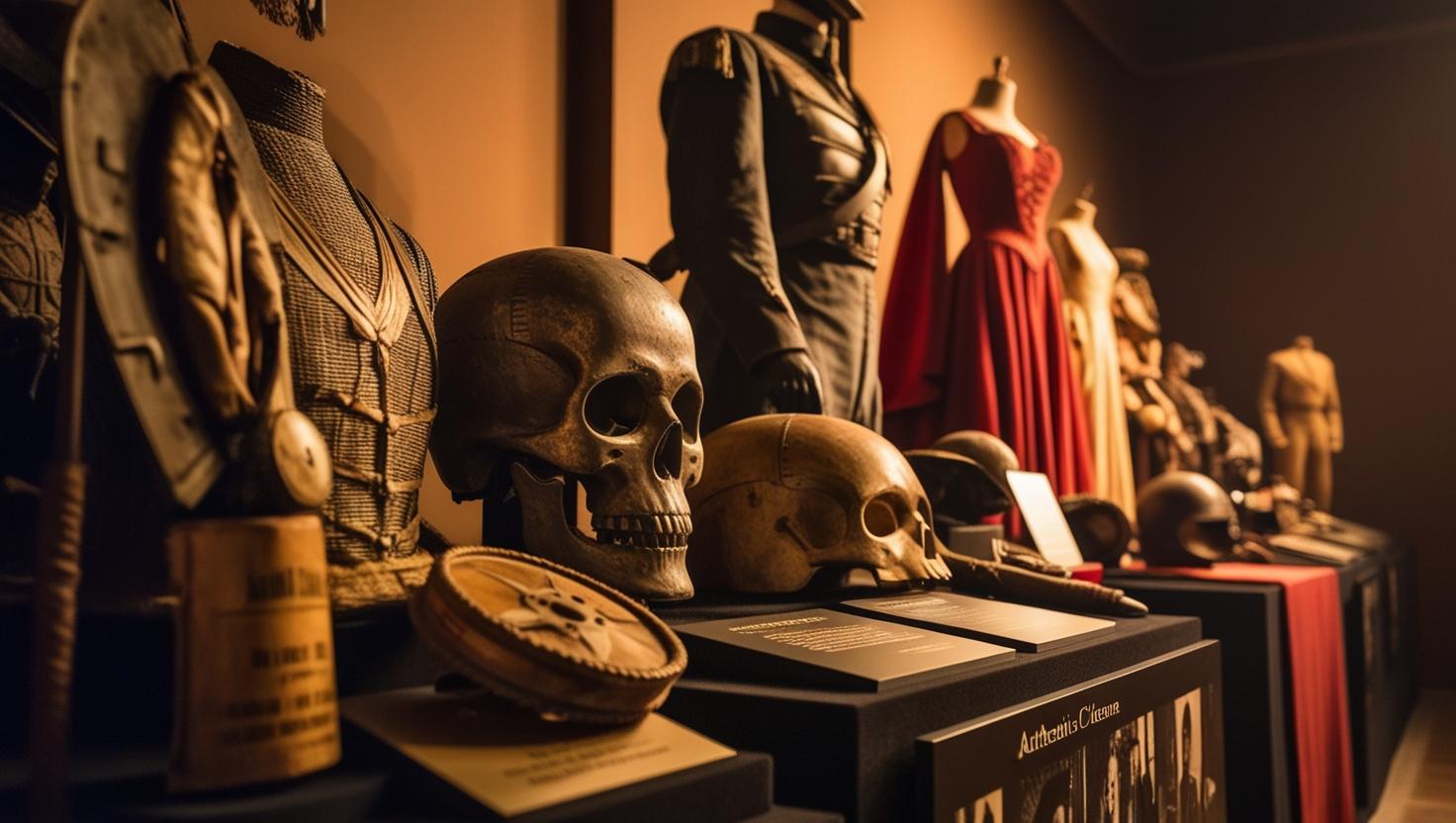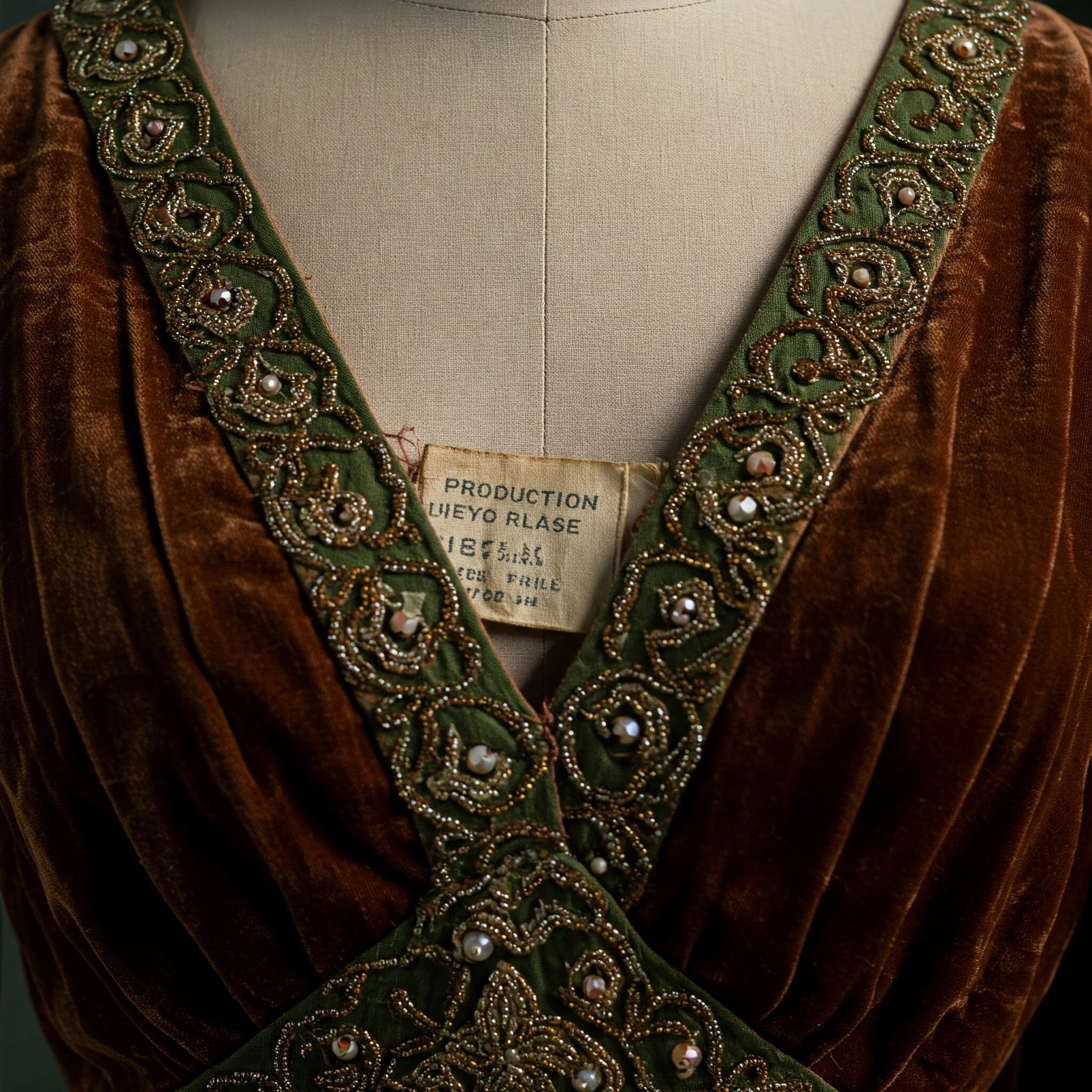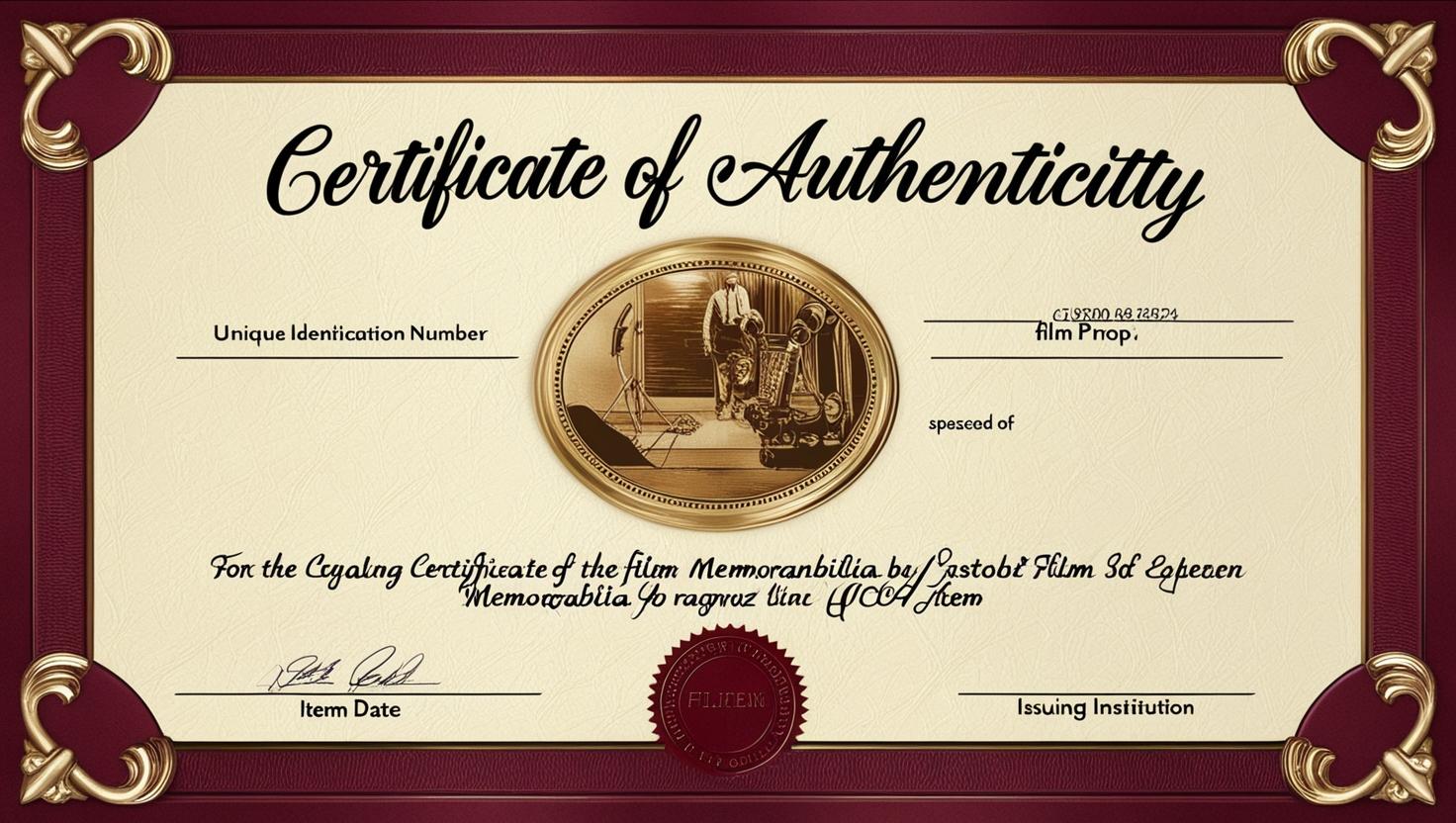The intricate tapestry of filmmaking consists of countless elements harmoniously intertwined to create the cinematic enchantment we experience on screen. Among these vital components are props—objects that establish authenticity, elevate storytelling, and breathe life into fictional realms. These items span from the commonplace to the extraordinary, yet all fulfill the essential purpose of reinforcing narrative progression and character development. For both casual cinephiles and dedicated collectors, comprehending what defines a prop and how these objects function within the cinematic landscape offers compelling insights into the meticulous artistry of visual storytelling.
What Is a Film Prop?
A film prop, abbreviated from "property," encompasses any tangible object manipulated or employed by performers during production. These items constitute a fundamental aspect of cinema's visual vocabulary, helping establish chronological settings, cultural frameworks, personality traits, and narrative components. Props may manifest as everyday articles such as coffee cups, magazines, or mobile phones, but they might also emerge as specialized creations unique to particular fictional universes, such as otherworldly devices or enchanted artifacts.
Props exist fundamentally to heighten the credibility of the world portrayed on screen. When performers interact with physical objects, their portrayals gain substance and genuineness that might otherwise be absent. These interactions provide audiences with visual anchors that ground even the most fantastical narratives in a semblance of plausibility. Nevertheless, props frequently undergo modifications to render them more appropriate for filming—they might be lightened for comfortable handling during extended sequences, reinforced to endure multiple scenes, or altered to appear more distinct when captured through camera lenses.
The development of props involves synergy among various departments including production design, art direction, and specialized craftspeople. Each item must complement the overarching aesthetic vision of the film while remaining practical for performers' use. The prop department bears responsibility for procuring, fabricating, and maintaining these objects throughout production, guaranteeing consistency across scenes that might be filmed weeks or months apart. Depending on financial parameters and production requirements, props may be purchased, rented, adapted from existing items, or meticulously crafted entirely from basic materials.
Different Types: Hero, Background, Stunt Props
Hero props represent the most prominent and elaborately detailed objects featured conspicuously on screen, often in close-up shots or during pivotal narrative moments. These painstakingly crafted items receive the utmost attention from prop artisans and typically exist in limited quantities due to their significance and the resources dedicated to their creation. Hero props may incorporate functional elements, intricate embellishments, and superior materials capable of withstanding scrutiny under high-definition cameras. The designation "hero" refers not necessarily to an item's association with a heroic character but rather its centrality within the visual narrative.
Background props populate environments and scenes to establish contextual authenticity without commanding particular attention. These items might appear in the periphery of settings such as workplaces, residential spaces, or communal areas, contributing visual dimension and verisimilitude without becoming focal points. Unlike hero props, background items generally exist in greater quantities and receive less individualized attention from prop creators. However, their collective presence substantially enhances worldbuilding and the comprehensive visual credibility of settings. Production designers might select these props based on historical accuracy, chromatic harmony, or thematic relevance.
Stunt props serve specialized functions during action sequences, providing safer alternatives to hero props when physical risks are involved. These items may be constructed from materials such as rubber, foam, or lightweight substitutes that minimize potential injury during physically demanding scenes. Multiple versions of stunt props frequently exist to accommodate varying filming requirements—some designed to break away harmlessly, while others maintain durability for repeated takes. The appearance of stunt props might compromise certain details to incorporate safety features, yet they remain engineered to preserve visual consistency with their hero counterparts when viewed on screen.
Props vs. Costumes: Where's the Line?
Props and costumes both contribute fundamental visual elements to filmmaking, yet they fulfill different primary functions within productions. Costumes generally comprise items worn by performers to establish character identity, historical context, social position, or personality attributes. Props, conversely, typically exist as objects handled or manipulated by actors during scenes. Nonetheless, the distinction occasionally blurs when considering accessories that might function as extensions of costumes while simultaneously serving as manipulated props.
Items such as ornamental pieces, spectacles, timepieces, or carried accessories often occupy this ambiguous territory between prop and costume classifications. A character's distinctive pocket watch might be categorized as a costume element when viewed as part of their overall appearance, but it transforms into a prop when the performer extracts it to check the time during a scene. This dual nature illustrates the fluid boundary between these production categories. Practical considerations often determine departmental responsibility—costume departments typically oversee items worn on the body, while prop departments manage objects primarily intended for manipulation.
The classification distinction holds particular relevance for collectors and auction houses specializing in film memorabilia. Authentication documentation might reference either costume or prop departments depending on which maintained custody of particular items during production. For serious collectors, understanding these nuances proves valuable when evaluating provenance and authenticity claims. Regardless of categorical designation, however, both props and costumes contribute profoundly to cinematic storytelling and possess comparable cultural significance as tangible connections to cherished films.
Iconic Props That Shaped Cinema History
Throughout cinematic evolution, certain props have transcended their supporting roles to become cultural landmarks recognized globally. These objects often symbolize entire films or franchises, becoming visual shorthand for the narratives they helped convey. The resonance of these iconic props stems from their seamless alignment with narrative significance, visual distinctiveness, and emotional connection with audiences. When utilized by memorable characters during crucial moments, ordinary objects can achieve extraordinary cultural impact that persists long after films conclude their theatrical runs.
The transformative journey from functional filming tool to cultural touchstone often begins with thoughtful design approaches that emphasize visual memorability. Successful iconic props frequently feature distinctive silhouettes, color schemes, or details rendering them instantly identifiable even in outline form. Yet their enduring significance typically derives not merely from visual appeal but from their narrative importance—how they advance storylines, illuminate character traits, or embody central themes. The most enduring props often represent physical manifestations of a film's fundamental concepts or emotional essence.
The afterlife of these significant props extends considerably beyond their original productions, influencing everything from merchandising to fan communities. Replicas, toys, and miniatures allow audiences to possess tangible connections to beloved narratives. Meanwhile, the original screen-used items command exceptional interest among collectors and cultural institutions, celebrated as authentic artifacts of cinematic heritage. The cultural impact of these objects reveals how props, despite their utilitarian origins, can evolve into powerful symbols that continue to resonate with audiences across generations.
Why Props Matter to Collectors
For film memorabilia enthusiasts, authentic props represent tangible links to the filmmaking process and the narratives that have shaped popular culture. These physical artifacts carry unique historical value as objects that participated in the creation of beloved films, having been handled by renowned performers and captured on camera during memorable sequences. The appeal for collectors lies not only in possessing a fragment of film history but also in preserving these cultural artifacts for future appreciation.
The collector marketplace distinguishes between various categories of props based on factors such as screen time, character association, and narrative importance. Hero props featured prominently with major characters typically generate the highest collector interest and monetary value. Background props might carry less individual significance yet still appeal to collectors seeking accessible entry points into film memorabilia ownership. The provenance of items—documented history establishing their authentic connection to productions—plays a crucial role in determining both cultural and financial value in the collector ecosystem.
The preservation aspect of prop collecting contributes meaningfully to film heritage conservation. Many significant props might otherwise be discarded, repurposed, or lost after production concludes if not for the dedicated community of collectors who recognize their cultural importance. Through careful documentation, appropriate storage, and occasional public exhibition, private collectors often function as custodians of film history, preserving physical elements of cinematic storytelling that future generations might otherwise never experience. This preservation role highlights how the collector community extends beyond mere acquisition to embrace cultural stewardship.





Leave a comment
This site is protected by hCaptcha and the hCaptcha Privacy Policy and Terms of Service apply.